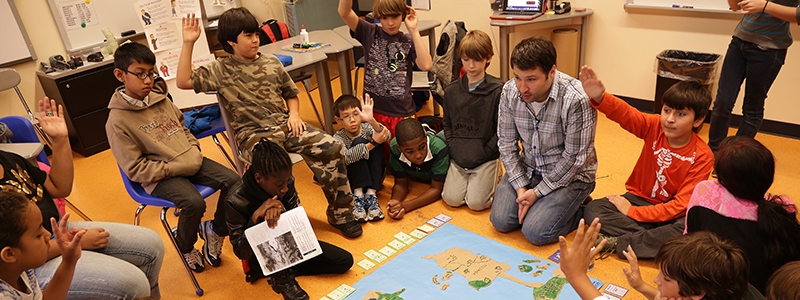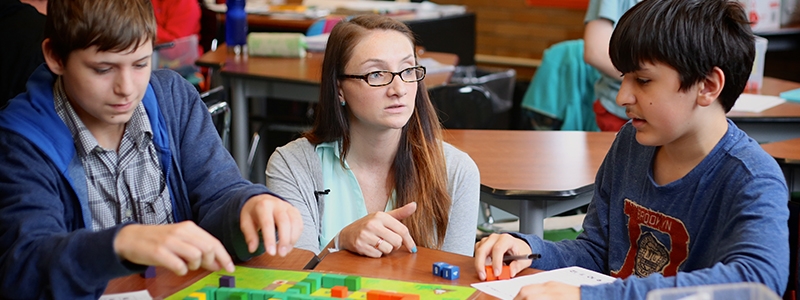Problem: Located in New York, this public school has broken away from traditional teaching standards and the concept of linear and passive learning by enabling students to learn though games. Created in 2009 by the Institute of Play, which was founded by games developers in 2007, the aim of Quest to Learn is to increase engagement and motivation, thereby potentializing the students learning so that they can relate to the world as an uninterrupted source of opportunities.

Solutions: The entire curriculum is based on games (electronic or not) and is integrated. Students from years 6 to 9 learn while playing but also develop strategies and create their own games. The school uses the same resources as other schools in the public network, but has eight extra professionals, hired by the institute as specialists in games and curricula, who support the teachers.
The subjects of Mathematics, Arts and English, for example, are grouped into a class on how to understand the world, numbers and letters. In addition, every semester starts with the students receiving a mission, which is divided into small challenges or “Quests”. Problems should be resolved in teams, through creative solutions. Students should also share knowledge with their colleagues.
One mission involved a combination of Social Studies and English, in which students had to resolve a conflict between the ghosts of the Natural History Museum of New York. The ghosts were fighting because they did not agree on the events of the American War of Independence. The fight was based on the different perspectives the ghosts had of the war: one of them had been a slave; one was from the English royalty and the other was an American settler. They had been alive during the same event but each one told a different version of what had happened and why it had happened. The students had to understand the views of each one and resolve the conflict.
As well as traditional tests, at the end of each challenge, the students must produce something that proves that they have developed the skills required for that activity. During the learning process, the method of embedded assessments (incorporated assessments, of free translation) is also applied. Usually, the students do not even know that they are being evaluated. With this format, the teachers observe not only what the students know but also how they put their knowledge to use.

Outcomes: While acting as players, the students feel empowered and begin to take risks and face challenges that they would avoid in real life. They learn to make decisions and promote transformations. This leads to an increase in their learning potential and their ability to be active members of society. This school has above-average grades in obligatory standardized tests and an Olympic champion in Mathematics. In 2016, almost 100 new students will be enrolled, aged between 11 and 18 years.






